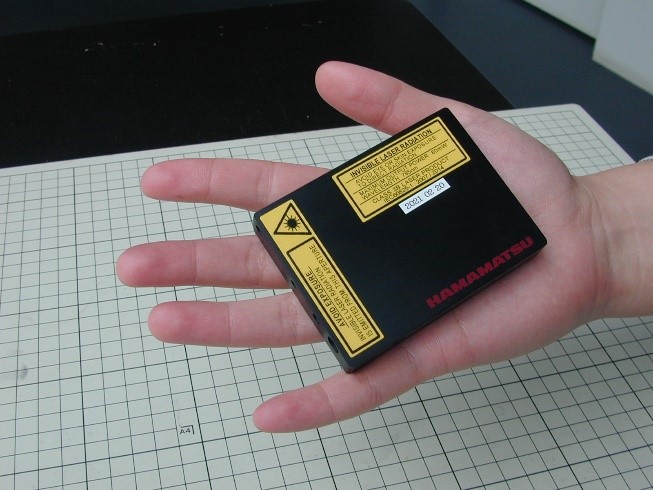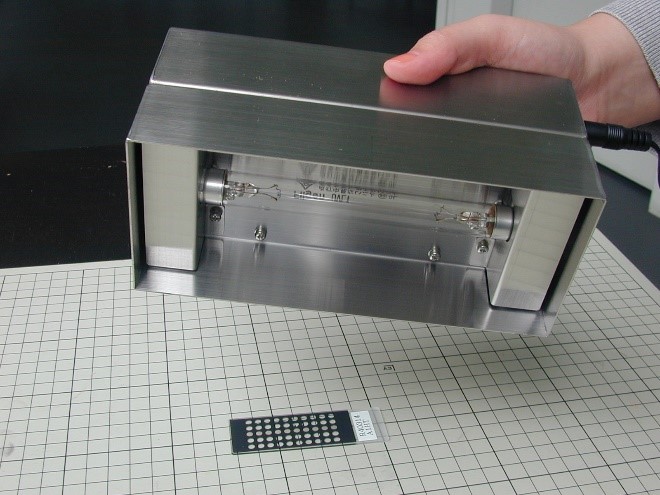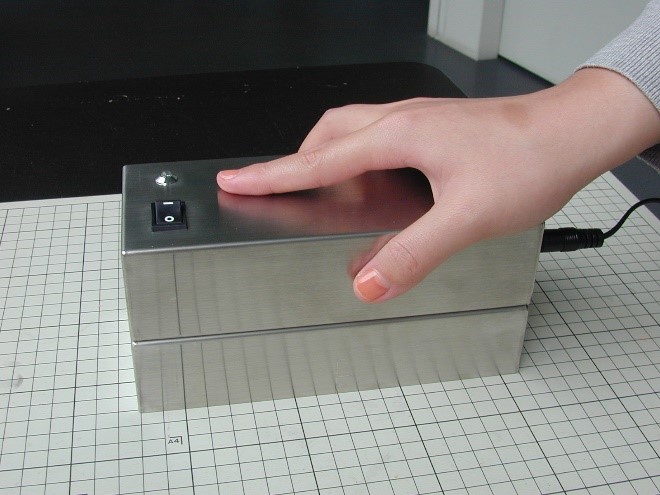Thank you for showing an interest in our SERS substrates. In evaluating our substrates for your applications, we have learnt a few tricks which we would like to share with you.
(1) Ultimate detection
For most sensitive measurements, it is imperative that the SERS substate is free of contaminants. Even though we check each substrate for artifacts prior to shipping for your own evaluation, we recommend you to clean the substate one last time before you use it. Cleaning has never been pleasant, but we have found a new product that does a marvelous job. The Handheld UV Ozone Cleaner UV253 Mini is a miniature portable UV lamp produced by Filgen, Inc., Nagoya, Japan. It is a simple matter of placing our substrate briefly under the lamp before exposing the substrate to you sample. The optimal duration ranges from 5 sec and upward depending on the age of the substrate.
This simple process adds great satisfaction to use of our SERS substrate.
(2) Storage of our Substrate
In our lab, our students cut the SERS substrate into smaller pieces, enough for the day’s experiment. The remaining SERS spots are put back in a 50 mL centrifuge tube, and the tube is filled with Ar gas for future use. It can be opened and resealed several times without significant reduction in performance, as long as you remember to put the substrate back in Ar atmosphere within a few hours. If left exposed to the atmosphere overtime, the substrate may no longer be suitable for highly sensitive measurements. If you do not have access to any Ar source, here is a possible alternative. We are experimenting with storing the substrate in HFC 134a Freon gas which is widely available in a small can. We will let you when we find out if it is a good solution.
(3) Quality Control
Quantitative experiments require careful quality control of the substrate. As a standard we resort to volatile alkanethiol such as methyl mercaptan for assessment. The process requires only exposure of the substrate to the gas, without any washing step. One disadvantage of using alkanethiols is the notorious smell. Without a proper facility to remove the smell, this can be a source of a headache, both figuratively and literally. We have found that a gas canister for a portable cooking stove is a convenient alternative. A smell component can produce a characteristic peak of a volatile sulfur compound. In Japan, we recommend Cassette Gas from Iwatani Corp., available in most hardware stores nationwide. I am sure other countries have similar products. Just inject the gas into a small container and place one piece of our SERS substates. The peak intensity should saturate after 15 min, and the resulting peak should serve as the indicator of the condition of the substrate on hand.
(4) Portable Raman Spectrometer
Another product we recommend is the spectroscopic module C13560 from Hamamatsu Photonics K.K., Shizuoka, Japan.

The company has always been renowned for fantastic photonic components and devices, but now they have a portable Raman spectrometer. It may not have the capability of a desk top model, but you would be surprised what it is capable of. It contains a 785 nm laser along with a spectrometer. It can be operated with a PC or smart phone as you wish. It is completely compatible with our SERS substrate. Its retail price in Japan is only slightly over 5,000 USD. I am sure they can slash the price in the future with an increase in greater production number.

